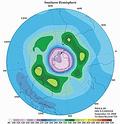 根據美國海洋暨大氣總署所主導的最新全球臭氧層評估結果顯示,只要各國政府繼續遵守蒙特婁公約,在2070年之後,臭氧層破壞物質的排放對於各區域臭氧的影響將會十分微小。
根據美國海洋暨大氣總署所主導的最新全球臭氧層評估結果顯示,只要各國政府繼續遵守蒙特婁公約,在2070年之後,臭氧層破壞物質的排放對於各區域臭氧的影響將會十分微小。
報告結果也顯示,美國自1980年代晚期以來已減少產生98%的臭氧層破壞物質。
這份最新的美國海洋暨大氣總署評估報告,首次針對美國在製造及減少含有氯、溴化學物質排放量方面所扮演的角色,提供了詳細的分析資料,這些物質都會導致臭氧層破洞,其中也包括氯氟碳化物(CFCs)。在1970年代之前,人類尚未發現氯氟碳化物會對臭氧層造成破壞時,當時氯氟碳化物主要用於冰箱和空調系統所使用的冷煤。
臭氧層破壞物質的排放,不僅僅來自冷煤的使用,還包括消防藥劑、電子清洗藥劑、發泡劑等其他產品的應用。
美國海洋暨大氣總署大氣化學家,也是此份研究報告的主要作者Ravishankara表示:「在美國及超過190個蒙特婁簽約國家的努力下,阻止了未來臭氧層破洞更加惡化的情況,也讓人類或其他生物免於曝露在有害健康的紫外線幅射之下。」
1987年的蒙特婁公約及之後陸續提出的修正案,針對臭氧層破壞物質的生產及使用,設立了限制規範,甚至淘汰禁用。
研究中發現,在1994年到2004年期間,美國在臭氧層破壞物質的排放量,約佔全球大氣中臭氧破壞物質含量的15%到39%。
自1980年代以來,在多數人類居住的南、北半球中緯地區,臭氧層已減少了約5%,但報告中指出,近來臭氧已有開始增加的現象。
臭氧本身也是一種溫室氣體,同溫層中的臭氧能暖化同溫層及間接暖化較低層的大氣,因此同溫層臭氧是影響氣候的重要物質。臭氧層的減少對氣候有冷卻作用,不過此項作用含蓋了其他許多要素,因此仍存在著許多的不確定性。
The emissions of ozone-depleting substances should have "a negligible effect on ozone in all regions beyond 2070," as long as governments continue to comply with the Montreal Protocol, according to a new assessment of the global ozone layer led by the National Oceanic and Atmospheric Administration, NOAA.
The report shows that the United States has cut the production of ozone-damaging substances by 98 percent since the late 1980s.
The new NOAA assessment offers the first detailed look at the role of the United States in emitting and reducing the emissions of chemicals containing chlorine and bromine that deplete the ozone layer. These include chlorofluorocarbons, or CFCs, that were used as coolants in refrigerators and air conditioning systems before the damage they do to the ozone layer was discovered in the 1970s.
Emissions of ozone-depleting substances arise from their use not only as coolants, but also as fire-extinguishing chemicals, electronics cleaning agents, and in foam blowing and other applications.
"With the efforts of the U.S. and the over 190 nations in the Montreal Protocol, we have avoided a future world of higher ozone depletion and exposure of humans and other living things to unhealthy levels of ultraviolet radiation," said A.R. Ravishankara, NOAA atmospheric chemist and lead author on the new report.
The 1987 Montreal Protocol and its subsequent amendments established limits and eventual phase-outs for production and consumption of several ozone-depleting substances.
The contributions of the United States to the emission of ozone-depleting substances to date have accounted for between 15 and 39 percent of the overall atmospheric abundance of ozone-depleting substances measured between 1994 and 2004, the report finds.
Since the 1980s, global ozone sustained a depletion of about five percent in the midlatitudes of both the Northern Hemisphere and Southern Hemisphere, where most of the Earth’s population resides; it is now showing signs of turning the corner towards increasing ozone, the report states.
Ozone is itself a greenhouse gas. The stratospheric ozone layer heats the stratosphere and, indirectly, the lower atmosphere so stratospheric ozone is a key component that affects climate. Depletion of the ozone layer has a cooling effect on climate, though large uncertainties exist regarding this effect, which is a combination of multiple contributing factors.





